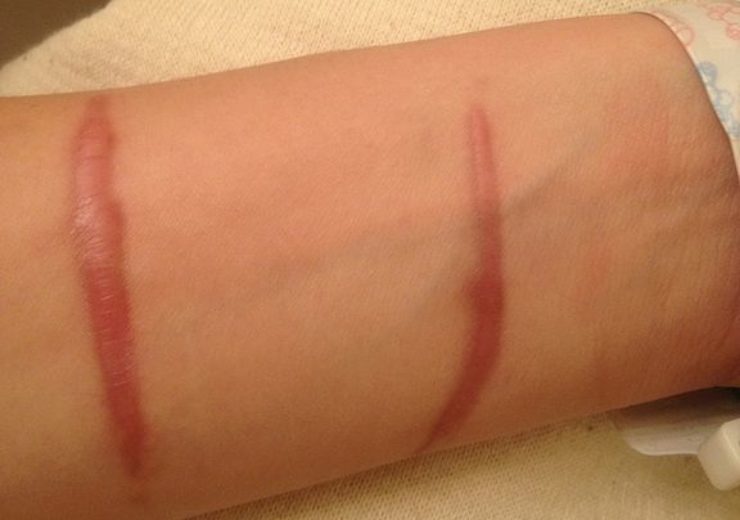Interim results presented at American Society for Dermatologic Surgery annual meeting

Image: Hypertrophic scar. Photo: Courtesy of Cgomez447/Wikipedia.org
Soliton, a medical device company with a novel and proprietary platform technology licensed from The University of Texas on behalf of the MD Anderson Cancer Center (MD Anderson), today released interim clinical trial results presented at the American Society for Dermatologic Surgery (ASDS) Annual Meeting on October 24, 2019.
During our keloid and hypertrophic scar (also known as “fibrotic scars”) proof-of-concept trial, we treated 10 people, each of whom received just a single 6-minute treatment with our Rapid Acoustic Pulse (“RAP”) device. Before treatment, we photographed each scar with a 3D imaging device that allows for precise measurement of both the volume and height of the raised scar. 6 weeks after that single treatment we took another set of 3D images, which then allowed for an objective comparison of before and after data.
The graph below provides a recap of the average for nine scars as one patient was not able to come in for this 6-week timepoint. There was an average reduction in volume of over 27%, and a reduction in height of almost 17% for the nine patients.
Importantly, there were no treatment-related adverse events of any kind and patients reported little pain from the treatment, so with the primary endpoint of this study being to establish safety and tolerability of RAP for this indication, we believe we are on our way to meeting that endpoint.
“We are very pleased with the interim results from this study,” stated Christopher Capelli, MD, founder, President and CEO of Soliton. “We will be conducting an analysis of the 12-week follow-up visit results and providing that data in the coming months. We view this proof-of-concept trial as the starting point for demonstrating that our technology could impact other fibrotic disorders. The same mechanism of action at work to reduce keloid and hypertrophic scars may extend to such indications as capsular contraction, Peyronie’s Disease, and even liver fibrosis.”
Fibrotic scars, such as keloid and hypertrophic scars, represent wound healing gone awry. Existing published research suggests that factors relating to the wound-healing environment (including stiffness in the extracellular matrix and tension at the boundary of the scar) can cause fibroblasts to become stuck in a hyper-productive loop, unable to stop the production of collagen that leads to the thickened, raised and dense structures often associated with these fibrotic scars.
The American Osteopathic College of Dermatology estimates that keloids affect around 10 percent of people, whereas hypertrophic scars are more common. Keloid scars are more prevalent among populations with darker skin pigmentation. Hypertrophic scars affect men and women from any racial group equally, with people between the ages of 10 and 30 years old being the most likely to be affected.
Grand View Research estimates the global market for keloid and hypertrophic scars may reach $10.2 billion by 2025. There are few treatment options available for fibrotic scars, which in addition to being disfiguring, can also cause significant discomfort. Currently, the most common treatment is the direct injection of steroids into the scar, however this can require multiple injections and may not be a permanent solution.
Source: Company Press Release
